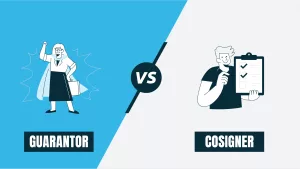Awareness of a particular risk when buying newly constructed apartments in NYC is important. The square footage of the apartment you thought you were purchasing may differ from what was advertised. The offering plans usually state that there could be a plus or minus 5% variance in square footage upon completion.
In some cases, the disclosed variation can even be up to 10%.
Be Wary of Square Footage
It’s important to note that some new developments calculate square footage differently. Instead of measuring the usable or interior square footage, they may include the area that the walls and even common spaces like elevators and hallways occupy.
It is important to note that there is a slight chance that your unit’s layout will differ during the final walk-through compared to what you saw during the initial viewing. This is because there is an allowed variance. In some cases, developers have removed approximately 20 square feet of closet space from a master bedroom’s walk-in closet.
During the final walk-through inspection, the buyer discovered that a wall had been constructed, removing half of his bedroom’s closet space. Despite being a rare instance, due to the developer’s significant presence in the industry and brand equity, they eventually issued a check to the buyer for a little over $20,000.
Delays or Cancellation by Sponsor among the Risks of Buying a New Construction
The sponsor has the right to cancel the sale at any point before submitting an effective amendment. An effective amendment can be filed only when at least 15% of the units are under contract. Once the effective amendment is filed, the project is considered effective, and the sponsor cannot reverse the decision to sell.
However, sponsors usually wait until the last moment to file an effective amendment, typically before the first closing.
Sponsors may include a cancellation clause to protect themselves in a market downturn. This clause allows them to cancel the agreement, even if it has been fully executed if the market experiences a downturn. This way, the sponsor can retain or operate the property as a rental building during the market downturn.
While it is rare for sponsors to cancel a sale, legal protection is always better. Some real estate attorneys have never witnessed this clause enacted during a deal.
It’s crucial to remember that delays in real estate projects are not uncommon.
New developments can take much longer than originally anticipated, sometimes months or years. The only safeguard for buyers is that the project’s sponsor must have obtained at least one legitimate Temporary Certificate of Occupancy by the end of the budget year.
If you buy a new construction condo that is expected to be completed by July 1st, 2019, the first budget year may run from July 1st, 2019, to June 30th, 2020. If the developer fails to obtain a legitimate Temporary Certificate of Occupancy by June 30th, 2020, all buyers have the right to cancel their contracts.
You cannot sue the sponsor if the new development purchase contract falls through. Your only recourse is to get your deposit back.
The Sponsor Can Force You to Close
A sponsor with a Temporary Certificate of Occupancy can force a buyer to close on a new home.
When you purchase a new home, you might not have the luxury of a courtesy 30-day notice or “on or about” closing date language, as you would in a typical resale. The language in resale purchase contracts is typically more flexible. According to the lawyers we’ve spoken with, “on or about” and “on or before” mean the same thing.
If you fail to close, you may default as the purchaser and must pay common charges, taxes, and a penalty.
If you fail to close a real estate deal within 30 days, there may be a penalty of up to 5% of the purchase price. Additionally, sponsors may have the right to cancel your deal, keep your deposit, and move on. Some lawyers have reported these consequences.
If you’re purchasing a new construction property, having a skilled real estate attorney is a good idea. One of the things a good attorney can do for you is negotiate a longer closing period. They may secure a right to adjourn for 10-15 days so that you won’t be charged any carrying costs or penalties during this delay period. This can be a great way to avoid unnecessary expenses and ensure everything is in order before you finalize your purchase.
The Sponsor May Not Have Funds to Complete Construction
It is important to highlight that the New York Attorney General’s office does not verify whether a developer has sufficient funds to complete a project. The only requirement in the new development offering plan is for the sponsor to disclose that they haven’t put up a bond and do not claim to have enough funds to finish construction.
It is crucial to remember this because when the AG’s office approves an offering plan, it only means they have reviewed the plan to ensure that it accurately describes the project and provides appropriate disclosures.
Not Being Able to Rent or Sell Post-Close
It’s worth noting that owners cannot advertise their units for sale or rent for one year after closing in most new development offering plans. However, this restriction only applies to new owners and not the sponsor. This implies that investors should review their rate of return assumptions if they can’t rent their units immediately. Even buyers who intend to move in should have contingency plans if their circumstances change and they can no longer use the property as a personal residence.
It’s important to remember that new construction projects can take several months to years to complete, which could result in a buyer having to relocate for work before closing.
Building Amenities May Not Be Finished
Sponsors of a new construction building in NYC have one year from the first closing to complete the building’s amenities. They technically default to the offering plan if they fail to do so within the given time frame. This poses a special risk for buyers of new construction homes as there is not much they can do if the sponsor fails to finish the amenities on time.
Your real estate attorney can threaten legal action to try and negotiate some concessions, but in most cases, it won’t be worth it to pursue litigation. Additionally, even if you insist on going to court, your attorney may not be the one litigating the case. Why would they want to jeopardize their relationship with someone they may do business with again?
Your Views or Windows May Disappear
One risk of buying a new home in NYC is that your view may disappear because of neighboring construction. This could be an acute problem if you paid up for a higher floor with an unobstructed view only to have a high-rise building in a few years that completely blocked out your view and any natural light you had.
To reduce the risk of future developments blocking the view from your apartment, you should consider buying an apartment with windows facing public parks, water, or any other areas less likely to be developed. In addition, if the apartment is located in a historic district or a neighborhood with mostly low-rise buildings, having windows that face the street can help mitigate this risk. Ideally, you should opt for a corner unit with windows facing two streets to reduce the risk of losing your view.
Purchasing a new construction home in NYC comes with some risks, including the presence of lot line windows.
You should carefully read the offering plan to determine if apartment windows are lot-line. A lot-line window implies that the neighboring lot has the right to develop its lot and construct up to and over your window.
If the neighboring lot has the potential to be built within 30 feet of your window, it is usually considered a lot line window. In such cases, it is common for lot line windows to be completely covered and fixed to the wall of the newly constructed development next door. This may cause the window to lose its view, and the owner may have to pay for bricking up the window.
Has the Sponsor Developed Property Before?
If you’re planning to purchase new construction in NYC, it’s crucial to understand the potential risks associated with inexperienced sponsors or those who are executing their first deal. Developing a property in NYC can be complicated with numerous challenges and delays, so it’s always better to work with a sponsor with significant experience in this field. This will help guarantee that your project is finished successfully and on time.
If you want to know more about the individuals involved in the project, refer to the “Identities of Parties” section in the offering plan. This section will offer information about the building’s architect, the sponsor’s lawyers, the proposed managing agent, and the sponsor themselves.
The section evaluates the sponsor’s ability to hire top talent and execute deals.
If you want to learn more about the project architect, you can find a detailed section in the offering plan. This section, which can be as long as ten to thirty pages, covers everything from the lot to the building and the individual units. The architect provides information on every aspect of the project, including the specific model numbers of the appliances used in the units.
Will the Sponsor Finish the Punch List?
When you buy a newly built condo or co-op, there is a chance that the sponsor may not have a set timeline for completing the punch list. The sponsor must only make reasonable efforts to fix any items on the punch list. Nevertheless, it’s essential to note that the punch list is a legal document and is referred to in the offering plan.
This implies that you can file a lawsuit and report any unfinished items on the punch list. Generally, prominent developers with established credibility will ensure the punch list is completed to the buyer’s satisfaction.
 taxes and the sponsor’s attorney fees.
taxes and the sponsor’s attorney fees.

